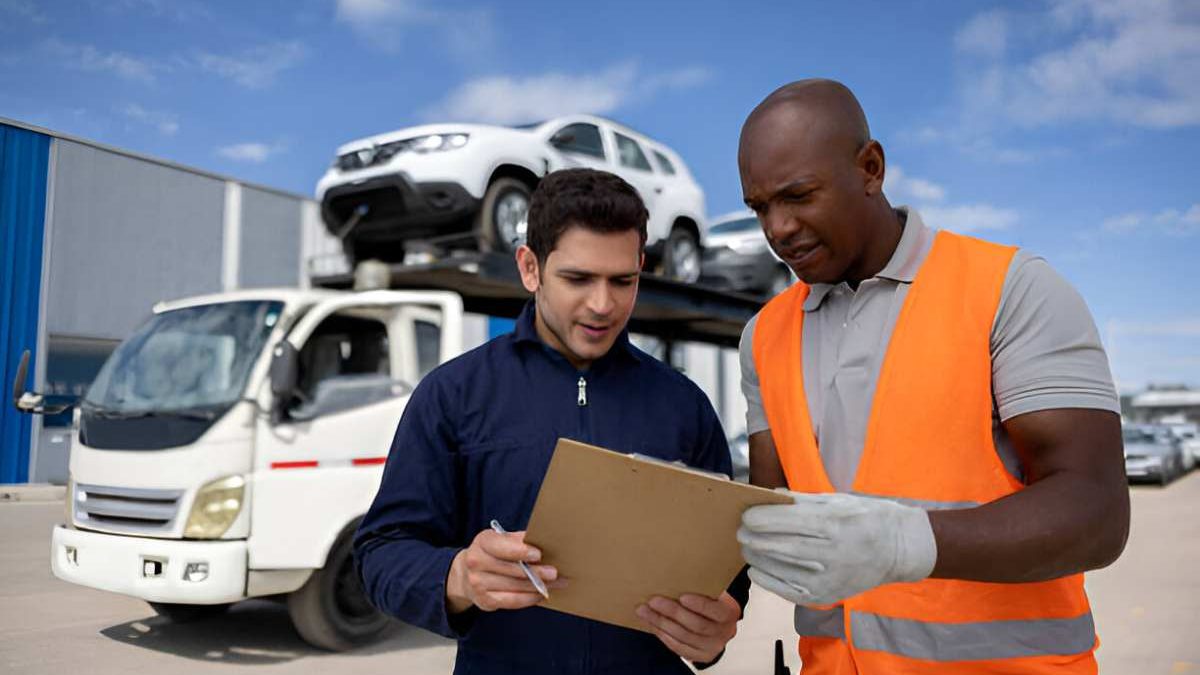If you have never done it before, transporting your automobile—across the country or merely a few states apart—can be intimidating. You may guarantee your car reaches its destination safely, though, by means of thorough preparation and attention to detail. Here are some fundamental vehicle shipping safety measures every owner should remember.
Table of Contents
1. Choose a dependable transport firm after some study
Choosing a reputable car shipping business comes first among your most important decisions. Not every transporter provides the same level of care or service. Begin by reading reviews online, inquiring friends for recommendations, and confirming the Department of Transportation registration of the company. Seek companies that provide insurance and have demonstrated ability to provide cars safely and on schedule. If you’re looking for a trusted Car Transport Service Nottinghamshire, prioritize providers with a proven record of delivering vehicles securely and punctually. It’s always a good idea to get multiple quotations, but remember the least expensive choice is not necessarily the safest.
2. Know Your Shipping Possibilities
Usually, car shipping businesses provide two forms of service: open and enclosed transport. Your automobile will be exposed to road debris and the elements but open carriers are more inexpensive and ubiquitous. Enclosed carriers provide extra weather protection for high-value, luxury, or vintage cars. Check over your specific demands with your chosen supplier to pick the choice best suited for your situation.
3. Carefully examine your automobile
Thoroughly check your car before passing your keys. Clean the outside as well as the inside to help you to find any damage already present. Using outdated pictures, record the condition of the car from all angles, the roof, and closeups of any dings or damage. Keep a copy for your records and give these photos to your transporter. Should you subsequently need to submit a damage claim, this paperwork will be priceless.
4. Clear away personal items and accessories
Remove all loose objects and personal items from your car for safety and insurance considerations. These products add weight (which might raise your expense) and can also move during transit and harm your car’s inside. Remove removable electronics, bespoke accessories, and anything not part of the car itself.
5. Get your car ready for transportation
Proper packing reduces the probability of problems during transit. Check your car battery’s charge, replenish fluids, and check the tire pressure. Turn off any antitheft alarms or systems that might impede loading and offloading. Tell the transporter in advance if there are any mechanical oddities with your automobile.
6. Leave Only a Quarter Tank of Fuel
Shipping doesn’t require a full tank of gasoline; indeed, it’s safer to leave only a quarter tank. This lowers the total weight and lowers the possibility of leaks or fire dangers. Moving the vehicle on and off the transporter at either end of the trip requires just a quarter tank.
7. Evaluate insurance coverage
Even if most reputable shipping firms have their own insurance, it’s important to know exactly what is covered. Make sure you know any exclusions or deductibles and ask for a copy of the insurance policy. Check with your own car insurance company as well to see if they provide any more travel-related cover.
8. Be available for delivery and collection
Make sure you or a reliable representative is present to supervise the pickup and delivery of your automobile. With the driver, examine the vehicle once more against your paperwork. Before signing off, make note of any fresh damage on the bill of lading.
9. Tell the story along the process
Throughout the procedure, keep contact with your shipping firm. Most respectable businesses give tracking and routine updates, but don’t hesitate to phone and follow up on the condition of your delivery.
Final Thoughts
Your automobile might not always be hard to ship. Following these safety measures guarantees your car is handled correctly and reaches at its new location safely. Selecting your carrier carefully, meticulously getting your vehicle ready, and keeping all recorded will let you experience a simple and secure shipping process.

